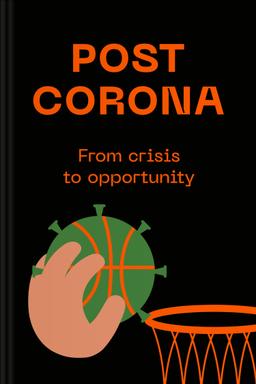You’ll learn
- How tech giants soared amid the pandemic crisis
- The reality of monopoly power
- About resilience in capital markets
- Capitalism's role in market balance
russia has launched a full-scale war in Ukraine. Donate to support Ukraine and protect the world’s peace.

first KEY POINT
In the middle of March 2020, the world began to realize the true extent of a new virus spreading fast. While many feared for their lives, the pandemic's natural effect had not yet dawned on people.Many countries initiated a total lockdown to curb the spread of the virus, which meant that only health and essential workers could attend their jobs. Other businesses started to crumble within weeks, and owners started feeling the brunt. However, as people complained, some organizations made more profits than ever. Companies like Apple, Tesla, and Google made huge profits, and their numbers dominated the market index.The reason for the financial dominance of big companies is easily explained. The United States system supports those with enough money to buy their way out of trouble. These companies control the market because nobody is willing to stop them. They quickly buy their potential competitors or run them aground with money. Customers purchase from them because they have no choice.This summary explores the surge in big companies' profits and why people must work together to overthrow dominant forces.
second KEY POINT
When the WHO declared the Coronavirus a pandemic, the world stood still, and people became perplexed. Governments worldwide battled to keep their people safe by declaring total lockdowns of different magnitudes. Businesses crumbled, and many people's mental health took a downward spiral. However, one distinct aspect during the pandemic is the capital markets' resilience. Key capital markets rapidly recovered despite an initial drop as the crisis escalated. They recouped most of their initial losses in just a few months. This bounce back was not reflected in broader public markets.Numbers in the market can be deceptive; this remarkable rebound is due to significant gains from a select group of companies, giant tech firms, and other vital entities. While the media has been distracted by the big tech and large corporate organizations, small businesses need to catch up significantly. The list of bankruptcies in the United States alone is long and shocking.In reality, companies with substantial cash reserves, the ability to leverage debt, and high-value stocks are well-placed to acquire assets from their weaker, failing rivals and dominate the market.The business world makes solid predictions about who will thrive or die in the post-corona era, and the divide between large and small companies, the innovative and the traditional, is growing daily. According to predictions, current market leaders will grow more dominant, while those lagging seem fated to fail.Over the past ten years, markets have valued companies based on their vision and growth potential rather than profits. Firms with substantial cash reserves, minimal or affordable debt, valuable assets, and low overhead costs are more likely to withstand the economic impacts of a lockdown.The strongest asset must be leveraged for companies down the pecking order. If the most substantial asset is the brand, they must heavily focus on it. For companies in precarious situations, survival hinges on necessary cost reductions. Things will take a long time before they go back to normal, and even with vaccines, the journey back to normality is slow and unpredictable.

Continue reading with Headway app
Continue readingfirst KEY POINT
second KEY POINT
third KEY POINT
fourth KEY POINT
fifth KEY POINT